READY TO GET STARTED?
REQUEST A FREE ESTIMATE
Fill out the form below or call (888) 466-7849 for a free, no-obligation estimate.

If you live in the south, chances are you’ve been bitten by a bug you can’t even see, leaving you with an itchy, red rash. Chiggers, AKA red bugs, are known scientifically as trombiculid mites. These pests aren’t even technically bugs – they’re actually arachnids and related to spiders and ticks.
Chiggers are found in every country around the world. They prefer environments that are moist and grassy, such as fields, forests, berry patches, and lawns. They are tiny and can usually only be seen with a microscope. Adults are 1/60″ in length and have 8 legs. Larvae are smaller, usually less than 1/50″ and are wingless and red with 6 legs. The larvae will turn yellow after eating. Chiggers are common in late spring, summer, and early fall. They are active when temperatures are between 77 and 86 degrees Fahrenheit and will die off when temperatures drop below 42.
Adult chiggers don’t bite. The larvae will hatch and then clump together on leaves and grass. As you walk through these areas, they attach to you. They then crawl around until they find bare skin and use their claws to make tiny holes in your skin. They inject saliva into the hole that turns your skin cells into mush which they then eat, leaving you with an itchy, red rash. They can bite anywhere on your body but will typically cluster around legs or waists.
Chiggers don’t spread disease to humans but scratching the rash can lead to infection.
Because they’re so hard to see, it can be difficult to even realize you have a problem with them until after you’ve already been bitten. Prevent chigger bites by:
If you have a problem with chiggers or any other pests this summer, contact your local pest control company for an inspection and appropriate treatment plan.
How to Care for Your Crawlspace
Signs of A Centipede Infestation
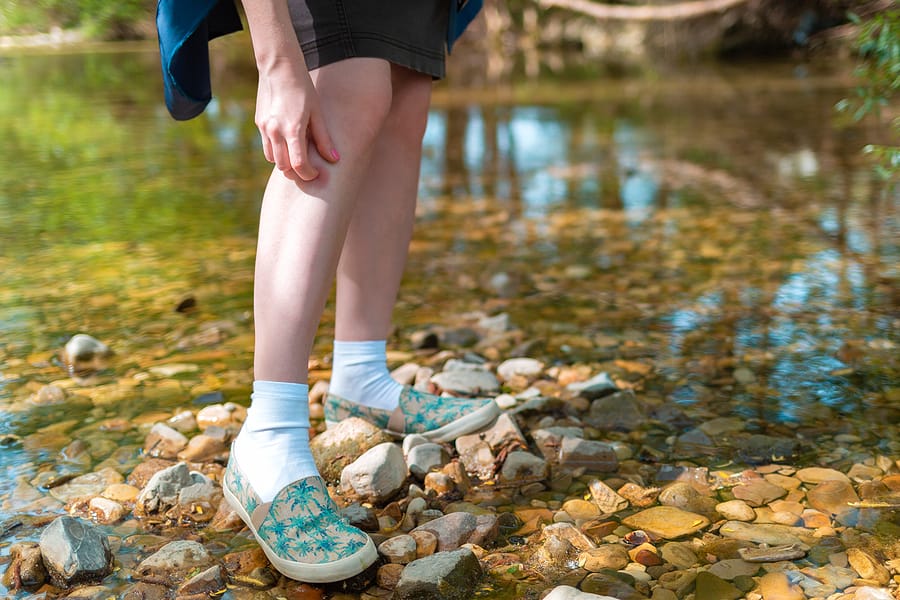
Chiggers, also known as red bugs, trombiculid mites, harvest mites, harvest bugs, harvest lice, mower’s mites, and berry bugs, are tiny red bugs that leave a big itch in their wake. These pests, classified as arachnids, aren’t dangerous but can be quite a nuisance if you get bitten. So what are those little red bugs and how can you avoid them this summer? Here’s everything you need to know about chiggers and how to prevent them.
Chiggers are tiny, about 0.3 mm in length. They are barely visible to the naked eye and often have to be seen with a magnifying glass. They can be red, orange, yellow, or straw colored. Juveniles (larva) have 6 legs while adults have 8. They are often visible once they congregate in clumps on the skin.
Chiggers can be found in every country worldwide but there are only 2 species in North America that are bothersome to humans with the most common one being Trombicula irritans. Chiggers prefer moist, grassy areas like fields, forest, lawns, and moss. Chiggers are most active when temperatures are between 77 and 86 degrees Fahrenheit and die when the temperature drops below 42 degrees.
Adult chiggers don’t bite; larvae do. Once these babies hatch, they clump together in large groups and attach to animals and people as they walk by. They then crawl on their host until they can find a patch of skin to feed on. They don’t actually burrow into or remain inside the skin as is popularly believed. Instead, they use their jaw-like claws to make a tiny hole they inject saliva into. The saliva liquefies the skin cells, providing a meal for the chigger. The skin around the bite hardens, creating a feeding tube for the chigger called a stylostome. The jaws of chiggers are quite delicate and are best able to penetrate the skin where there are wrinkles or folds. They can latch anywhere onto the body but will most often cluster in areas around the ankles, groin, crotch, knees, armpits, and waist.
Chiggers don’t bite when the temperature is below 60 degrees Fahrenheit or above 99 degrees. Bites can often go undetected for 1 to 3 hours before itching begins. If undisturbed, chiggers will feed for several days. Pronounced itching is the most common symptom of chigger bites. This itching can last for several days. The area around the bite can also become red with a rash, hives, bumps, or blisters. Chiggers aren’t known to spread diseases in North America but scratching the bites can lead to irritation and infection if the skin is broken open. Chigger bites can take 1 to 2 weeks to heal.
While chigger bites aren’t dangerous, they can be a nuisance, especially if the itching is severe. After being outdoors, perform a full body check, using a magnifying glass to see better. Chiggers can be seen as tiny red dots either anchored into the skin or moving quickly across your body. Once you come indoors, take a bath or shower and scrub your skin with soap and water to remove any lingering bugs. Wash any clothes, blankets, or towels that were worn or used outside in hot water to kill any bugs that might still be hanging on. Treat your bites with over-the-counter anti-itch cream or ointment like menthol, calamine lotion, or hydrocortisone). If the itching gets too bad, try over-the-counter antihistamines (like Benadryl) and use cold compresses at the site of the bite.
Chiggers can usually be prevented by following the techniques above. If you suspect you have a problem with chiggers or any other pest, contact a professional pest control company who can provide you with the most current and appropriate treatment and prevention options for you.
Wildlife: Leaving a Mess Behind
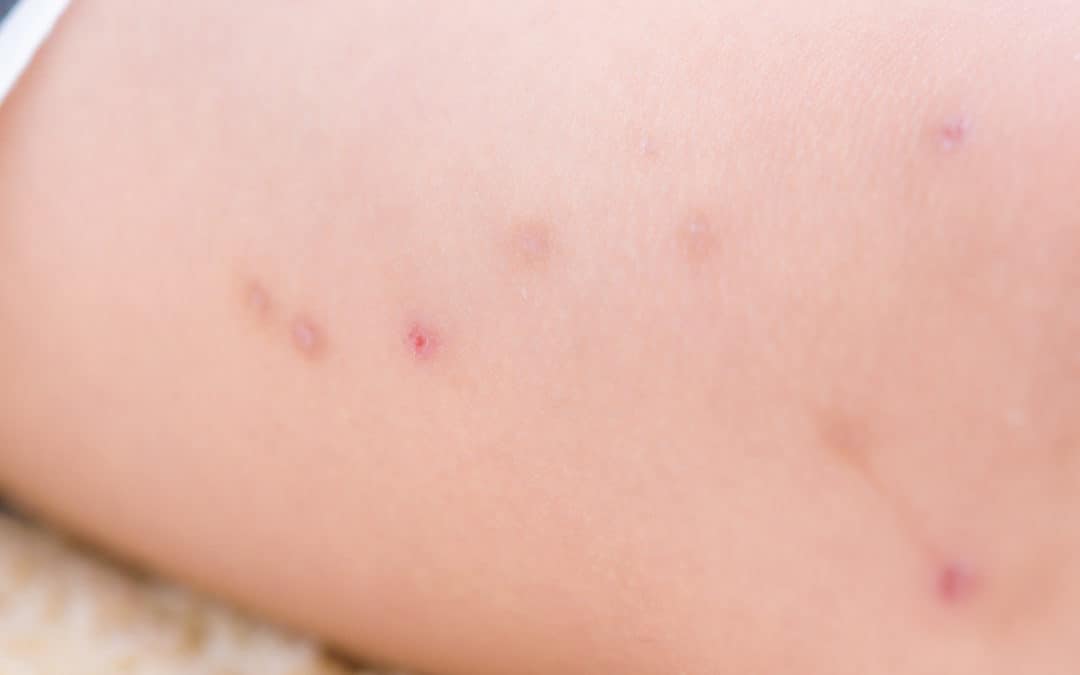
Summertime for most families means more time outdoors: exploring local parks, hiking mountains, kayaking down rivers, or simply lounging in your backyard. While these activities are fun for everyone, you can expose yourself to pests that like to bite. Fleas, ticks, and chiggers can be considered small, annoying, and hard to spot! Let’s break down the difference between all three of these parasites and some tips on bite prevention.
Fleas
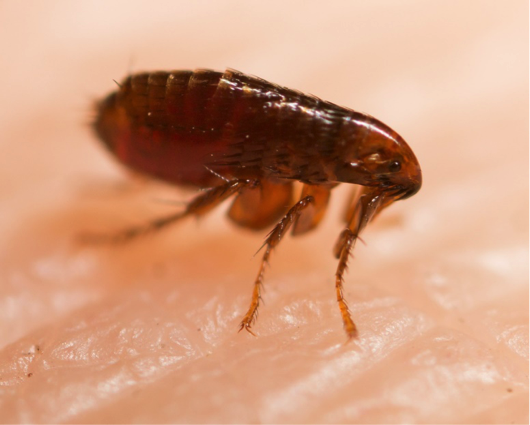
Small and wingless, fleas are dark reddish-brown in color and are only 1/8 of an inch long. Fleas can be found in almost any environment, but they are most active in warm, humid temperatures. While these pests feed on warm-blooded bodies, including humans, they do prefer to dine on hairy animals such as dogs, cats, rats, opossums, and more. Fleas are extremely hard to spot since they move so fast to a warm-blooded body.
Fleas can jump up to 8 inches high and 13 inches horizontally. This means that they can jump 150 times their own height, making finding a host to feed on very easy. Flea bites can be small, red, itchy spots on the skin. If the spot is scratched or irritated, it can begin to bleed.
Ticks
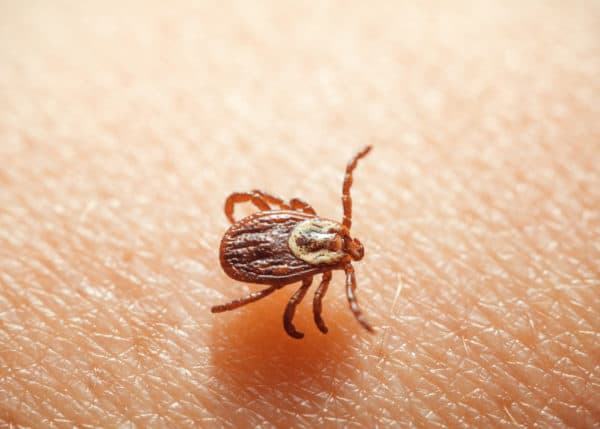
Ticks are orange-brown with dark legs and have a flat oval shape for a body. At a length of 1/8 of an inch, adult ticks actually have 8 legs and two body segments, making them an arachnid and not an insect. Ticks live in low-lying areas such as grass, shrubs, and bushes. These pests need blood to survive and will therefore feed on humans, squirrels, raccoons, birds, dogs, and more.
When ticks bite their host, it can cause irritation, an allergic reaction, and mouth parts can even remain in the host’s skin. Ticks are considered dangerous as they are known to transfer Lyme disease, anaplasmosis, and babesiosis.
Chiggers
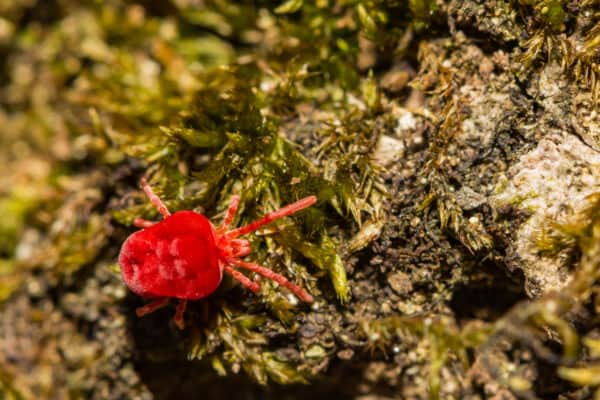
Sometimes referred to as mites or red bugs, chiggers are extremely small and difficult to spot. Red, orange, yellow or straw-colored, these arachnids are no more than .3 millimeters long. Chiggers can be found in areas of wood and grass, near lakes, ponds, streams, and rivers.
While they don’t pose a serious health risk, they can leave behind an uncomfortable rash after a bite that you’ll want to scratch. Chigger bites are most common in the late spring, summer, and early fall.
It’s important to take precautions if you know you and your family will be in areas where fleas, ticks, and chiggers are present. Here are some things you can do to prevent bites from these pests:
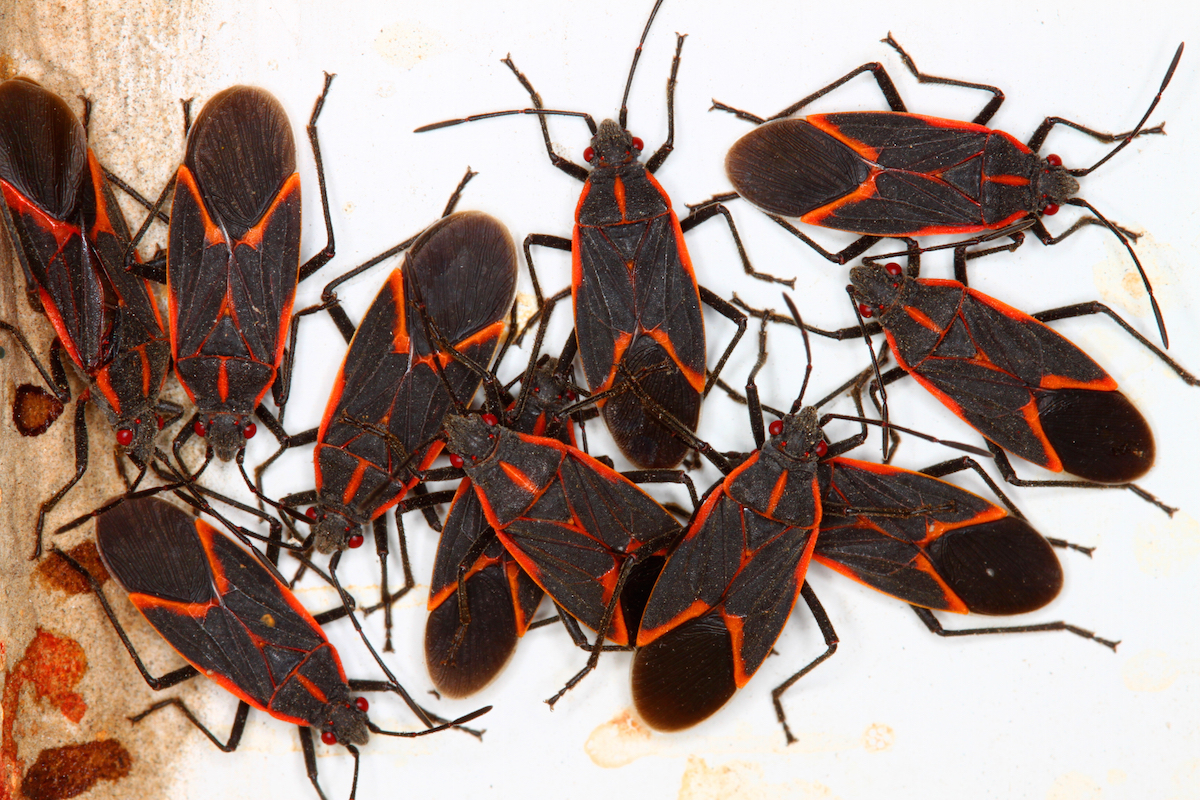
You may have walked outside recently and come across a congregation of small black and red bugs either on your home or car. These are boxelder bugs or, as they are affectionately called in the south, “lovebugs”; one of the many overwintering pests we tend to encounter when the temperatures drop and take up residence on the south side of homes, vehicles, and rocks where the sun shines in abundance. The question is, should you be concerned?
Let’s break down what “overwintering” means and the process by how it affects bugs and your home. Overwintering is defined as the process of insects passing the winter seasons. In the warmer months, boxelder bugs reside and thrive in boxelder and silver maple trees. There they lay their eggs and feed on leaves and flowers.
Once temperatures start to drop, these bugs will migrate by the thousands out of the trees and take up residence on the south side of buildings and homes. Then, they either migrate to a nearby site to hibernate for winter OR make your home their hibernation spot for the winter season.
So, what’s the risk of a boxelder bug home invasion? While boxelder bugs are not known to bite, they may bite when threatened and puncture the skin, causing a slight irritation and leaving a mark, similar to a mosquito bite. They will also leave a reddish orange stain from their fecal matter that will add discoloration to fabrics when crushed.
If you’re having a boxelder bug problem, our Rome Northwest team is ready to help. A professional pest control plan has proven to be effective in controlling these overwintering pests when infested tress and the other areas around your home are treated with a residual pest control product. Schedule a free estimate to get started.
What are the tiny red bugs crawling around my windows?
This is a common question that we get in early spring and late fall. Clover mites are found in warm, sunny places which is why you usually see them around your windows and crawling on your curtains. Clover mites are smaller than the tip of a pencil which allows them to fit into the smallest cracks and crevices around a structure. They are oval shaped with 8 legs. Their 2 front legs are longer than the rest and protrude forward which can be confused with antennae.
Clover mites can be alarming to homeowners because they gather in large numbers but there is no need for alarm. Clover mites do not bite or carry diseases, however they can cause skin irritation to some with sensitive skin. (These are not to be confused with chiggers which look similar but get into the skin and itch.) They do not damage furniture or pursue your food. Clover mite eggs lay dormant in the summer months and hatch in temperatures of 85 F or below. They are attracted to warm, sunny places which leads them to the windows in your home. Clover mites are often identified by the red stain they leave once they have been squashed. The red substance is the pigment in their color, not their blood. Grass and clovers are their main source of food.
There are simple ways to get rid of clover mites in your home. The best way is to vacuum them up. As with any vacuumed pest, make sure that you dispose of the bag immediately in an outdoor trash can. Disposing of the bag is always recommended but is especially an issue when it comes to clover mites because they are so small and can escape from the bag into your home. Another way to get rid of clover mites is to place sticky traps around your windows. As always, prevention is your best option. Clover mites feed on fertilized lawns, so if you are seeing an infestation cut back on the fertilizer. Remove grass that has direct contact to your structure. Instead, use soil, gravel, or mulch because clover mites have difficulty moving on bare, loose terrains. Make sure all window screens are tight fitting. Seal any cracks around the outside of the structure and use weather stripping on entrance areas.
If you are having a consistent problem with clover mites or other pests, it’s best to call Northwest Exterminating. We will ensure that your issue is identified and a customized plan is created for treatment of clover mites.
Are these small red bugs showing up in your home?